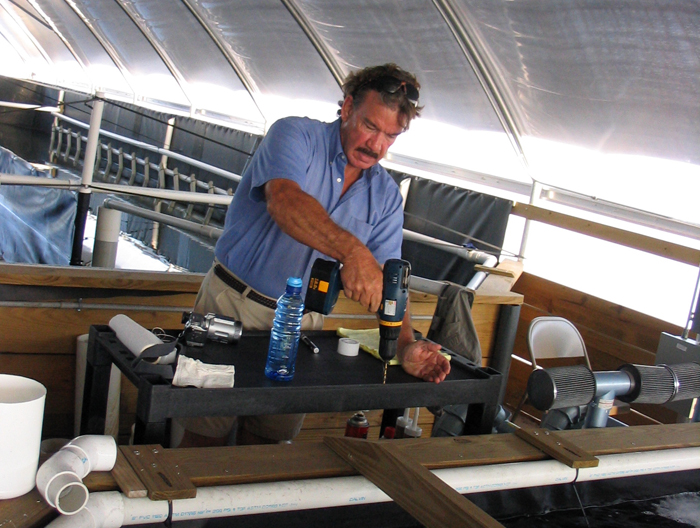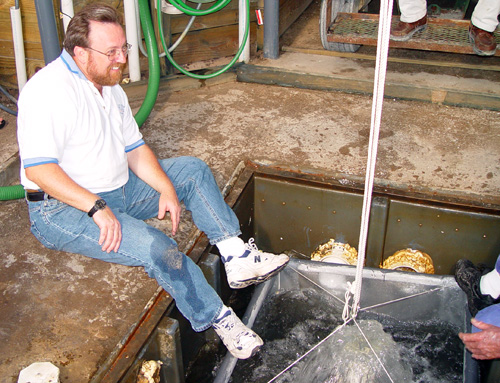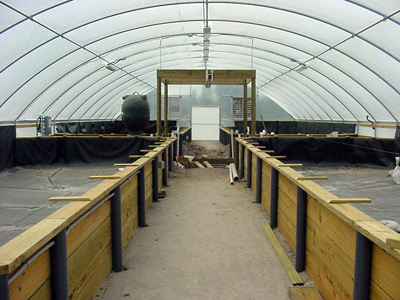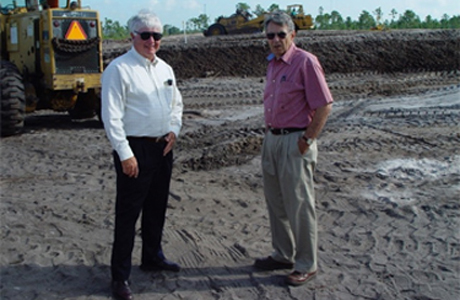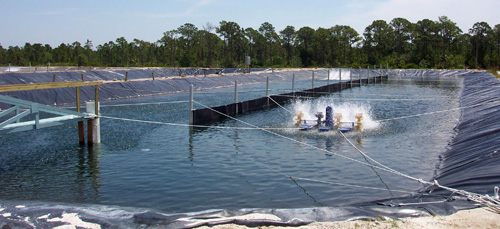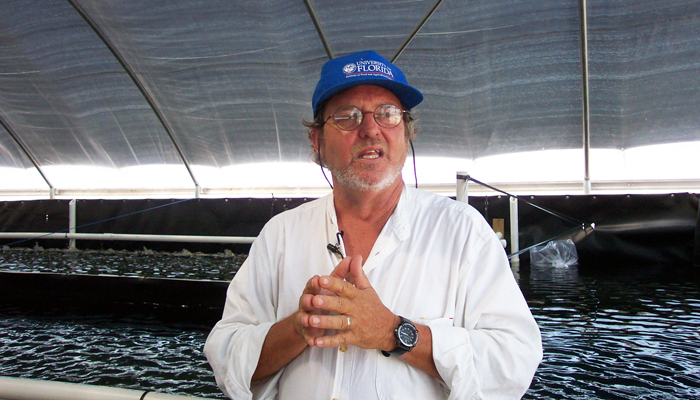About the UF/IFAS Aquaculture Program
University of Florida/IFAS Indian River Research and Education Center Aquaculture Research and Demonstration Facility , Fort Pierce, Forida
The mission of the IRREC Aquaculture Program is to conduct research relevant to the aquaculture industry in Florida and the southeastern United States as well as to interpret the results and to provide information to current and potential aquaculture producers.
Additionally, education of students, graduate students, and post-docs is a crucial part of the mission. The IRREC Aquaculture Research and Demonstration Facility and the associated programs are led by Dr. Cortney Ohs. Dr. Ohs is a faculty member at Indian River Research and Education Center and in the School of Forest Resources and Conservation Program in Fisheries and Aquatic Sciences. The original 26.5 acre site and its four 0.25 acre lined ponds and retention pond served as a shrimp demonstration project and were designed by individuals who are recognized on the site history section of this website. Dr. Ohs greatly expanded the site to include a new greenhouse, a new hatchery building, and a large water treatment system. Dr. Ohs leads the research and extension programs to identify aquatic organisms with aquaculture potential, to conduct research to define how to commercially produce them, and to improve production methods of organisms currently cultured by increasing efficiency and profit potential.
Specifically, the research objectives fall into four categories
- Defining culture methods for various marine ornamental fish species including broodstock reproduction and defining optimal culture parameters and feeding regimes for all stages of development to produce market sized fish;
- Evaluating the aquaculture potential of various species of marine fish demanded for bait;
- Evaluating the production of marine copepods and other live feeds for larval marine fish; and,
- Evaluating broodstock nutrition and reproduction of multiple marine and freshwater fishes.
A Brief History of the IRREC Aquaculture Demonstration Project
Early Concept
The UF/IFAS Indian River Research and Education Center Aquaculture Demonstration Project began in the early 2000s with investigation whether marine shrimp could be cultured in low salinity pond water as found in inland Florida farming.
Agricultural land in the region was abundant at the time and the primary crop, citrus, had faced increasing challenges due to weather, diseases and pests. Florida food production is bountiful because of yearlong warm weather and also due to the Floridan Aquifer, a mineral-rich, natural supply of freshwater easily accessed by growers statewide. The thought was that a live shrimp research program was needed to determine the economic and production viability for high-value Penaeid shrimp. The concept developed from conversations with then UF/IFAS Associate Professor of Agricultural Economics, Ferdinand Wirth, and longtime cattle rancher and citrus grower Frank “Sonny” Williamson Jr. At the time, Williamson operated a catfish farm in Alabama. Wirth and Williamson believed a new industry might provide a profitable alternative for the region’s many agriculturalists. To assist in their efforts to gain funding and to plan the shrimp production test site, Wirth enlisted LeRoy Creswell, a longtime aquaculture expert who at the time served as a UF SeaGrant regional aquaculture extension agent. Wirth and Creswell wrote two successful grants for funding with the Florida Department of Agriculture and Consumer Services, Division of Aquaculture, and gained additional funds from six sources.


